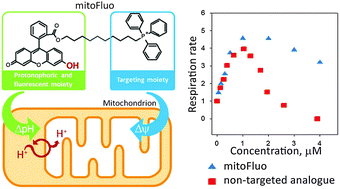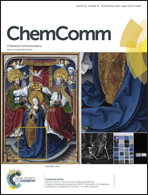A mitochondria-targeted protonophoric uncoupler derived from fluorescein†
Abstract
Linking decyl-triphenyl-phosphonium to fluorescein yields a fluorescent probe that accumulates in energized mitochondria, facilitates proton transfer across membranes and stimulates mitochondrial respiration. This features a mitochondria-targeted uncoupler, being of potential interest for therapeutic use against oxidative stress-related diseases.


 Please wait while we load your content...
Please wait while we load your content...